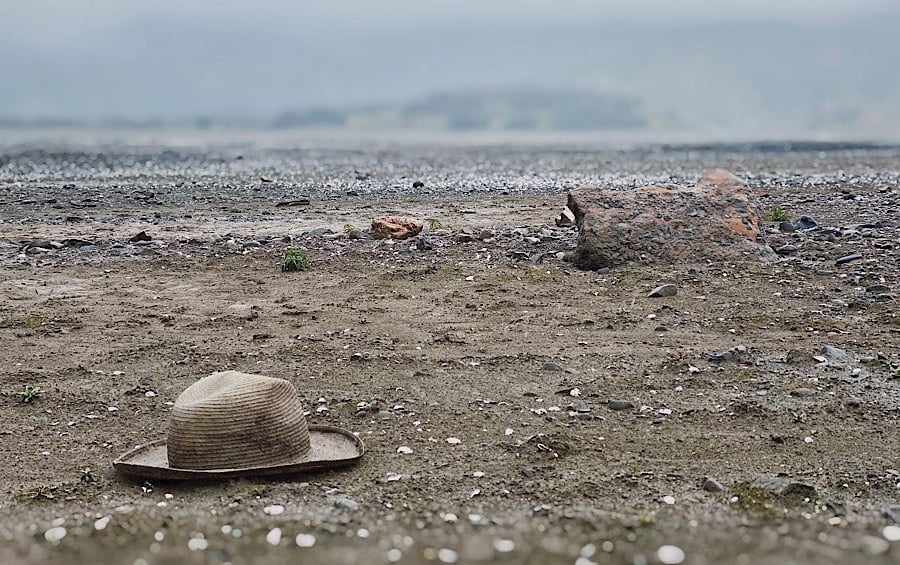MENDOCINO COUNTY, 7/15/22 – As of July, the vast majority of Mendocino County residents are living in conditions of severe drought, according to the National Integrated Drought Information System. On July 12, Coyote Dam — a pivotal local water source — was storing just 41% of its average water capacity, according to data provided by the California Department of Water Resources — though thankfully, that’s still 21,909 more acre-feet of stored water than this time last year.
“Our current drought’s really highlighting how unsustainable it is that we continue to pump groundwater [and] continue to not capture water when we really desperately need it,” said Kristina Dahl, principal climate scientist for the Climate & Energy program at the Union of Concerned Scientists, at State Senator Mike McGuire’s town hall on wildfires in June. “Climate change is exacerbating that natural pattern of drought that we have.”
Unfortunately, it’s not the first time Mendocino County has faced water shortages, including the devastating Stage 4 water crises along the coast beginning last fall. The question is not so much whether there will be drought, but what its impact will be.
The State Water Resources Control Board’s most common recourse when water supplies are limited is restricting water rights through curtailments, limiting stakeholders’ claims to water around the state based on hierarchy. So, how will water sources fare this summer? What restrictions will residents be under in different municipalities?
The Mendocino Voice will continuously update this story as new restrictions emerge in summer 2022; and all summer, stop here for up-to-date links to water companies in municipalities and cities throughout Mendocino County, as well as need-to-know info for residents who get their water from wells.
Let’s get into it!
What are the current restrictions in Mendocino County?
The Mendocino County Water Agency, a special district governed by the Board of Supervisors, regularly updates restrictions and notices from the State Water Board for locals online. One notable recent change came in the form of a new voluntary water-sharing program for the Russian River watershed, which would allow more senior water right holders to share their allocations with junior right holders who might otherwise be completely without water in a critical drought. Program enrollment closed June 20.
But that program has been complicated by a request from PG&E to reclassify California’s water year from “dry” to “critically dry,” which the Federal Energy Regulatory Commission approved on July 27. This variance dramatically reduces flows from the Potter Valley Project to the Russian River Watershed. A full list of curtailed appropriative and riparian water right holders is updated on a status table from the State Water Board.
The State Water Board also adopted a regulation on May 24 that bans irrigating commercial, industrial, and institution turf (for example, grass in front of a building with that purpose). The ban does not extend to watering turf used for recreation or community purposes, water used at residences, or water to maintain trees, the water board stipulated.
Water conditions by municipality
Village of Mendocino
Mendocino has been under a Stage 4 Water Shortage Emergency since March 28. The Mendocino City Community Services District Board said in its declaration that, as of that date, rainfall was at 56 percent of normal totals – and that the district’s monitoring wells showed lower than normal recharge to the town’s aquifer.
For Mendocino residents, this means:
- A 40 percent reduction of all water allotments.
- A temporary moratorium on new groundwater extraction permits which increase water demand and on aquifer pump tests or hydrological studies.
- No one can hose down the outsides of buildings, porches, sidewalks, driveways, or other hard surfaces.
- Restaurants should not serve water to customers, except upon request.
- Groundwater extraction permits are mandatory for all developed parcels within the district.
- Landscape watering by garden hose or drip irrigation can only be done between 7 p.m. and 10 a.m.
- Vehicles can only be washed with a bucket and sponge or with a hose with a shutoff nozzle.
- No one can refill hot tubs, pools, ponds, or decorative fountains.
Laytonville County Water District
The Laytonville County Water District has had the same restriction in place since 2015 — residents may not do any outdoor watering between the hours of 11 a.m. and 5 p.m. (In periods of more intense water conservation, residents can only do outdoor watering on Wednesdays and Saturdays.)
District Manager Jim Shields said that even during landmark drought last year, Laytonville’s aquifer “fully recharged itself.” He expects this will be a good year, too; Laytonville is one of the water districts that sells water outside its own boundaries.
Updates to Laytonville water restrictions can be found online.
City of Ukiah
Ukiah does not currently have water restrictions in place; as a senior right holder since 1914, it also recently signed onto the voluntary water sharing agreement for right holders in the Russian River Watershed — meaning that, during potential periods of scarcity over the summer, the city agrees to share water rights with more junior right holders.
“Ukiah being a very senior rights holder has the most to lose, but [we] have come to the conclusion that sharing in this situation is not losing,” Water Resources Director Sean White said in presenting the agreement to the city council.
Updated information on Ukiah’s water can be found on the city’s Water and Sewer web page.
City of Fort Bragg
Fort Bragg implemented Stage 1 Water Conservation restrictions on July 25, later than anticipated due to spring rains and “positive” flows in the Noyo River (per an interview with public works analyst Sandy Arellano in June).
Residents will be required to limit landscape irrigation to Tuesdays, Thursdays and Saturdays from midnight to 9 a.m. and 6 p.m. to 11:59 p.m. Any free flowing water systems such as sprinklers, vehicle and equipment washing, ponds, or evaporative coolers must have automatic shut-off devices to conserve water.
Restaurants may only serve water upon request and all commercial lodging establishments must offer patrons the option to forgo daily laundering of towels, sheets and linens. Pools, spas and fountains must be equipped with a recirculation pump and must be leak proof. If a leak is discovered by the city or the owner, it must be repaired within five days of discovery.
Water restrictions are updated on Fort Bragg’s Water Conservation web page, which also includes all kinds of resources on how to save water. The city also provides water conservation kits to the public free of charge.
Brooktrails Community Services District
All customers in Brooktrails who use this water system are limited to a water usage cap of 9,000 gallons per month. To put that in perspective, that’s about 321 gallons per day; the average American family uses around 300 gallons per day. Other drought-related restrictions in Brooktrails are updated on its Water and Sewer web page.
Potter Valley Irrigation District
The Potter Valley Irrigation District provides agricultural water from the Eel River watershed to a number of farms in Potter Valley, and shares updates on its website.
“The total reduction of water to Potter Valley water customers in 2021 was 75% of normal,” Steven Elliott, the district’s superintendent, wrote in March. “I believe the worse-case scenario in 2022 will be a 50% loss in available water.”
City of Willits
There are no water restrictions in place in the City of Willits’ water district currently. Water updates are posted to the city’s website.
North Gualala Water Company
From June 1 through November 14, residents served by the North Gualala Water Company will be in voluntary conservation mode based on reduced flows in the Gualala River.
More information is available on the North Gualala Water Company’s website.
Point Arena Waterworks, Inc.
Beyond voluntary reductions encouraged statewide, Point Arena Waterworks, Inc. had no specific restrictions in place in June. Customers are notified of any restrictions by direct mailers, as well as by a notice posted at the local post office, a spokesperson told the Voice.
Round Valley County Water District
Round Valley County Water District does not have any water restrictions at this time, General Manager Imil Ferrara said in an email. Water here is drawn from the Upper Grist Creek Watershed.
Redwood Valley Water District
The Redwood Valley Water District has been restricted to 55 gallons per person per day domestically, Jared Walker, general manager of the Willow County Water District, shared with the Voice. He also said all agricultural water has been shut off since last spring.
“I don’t anticipate those being lifted or changed this year,” he wrote.
On a well?
Many Mendocino County residents use private wells, and these are not immune to drought either. Within the month of June, California saw a 34 percent increase in reports of dry wells since the previous 30 days.
Mendocino County provides a drought hotline at (707) 234-6363 and a drought email at [email protected] for residents with questions about how drought might impact their well water.
For residents whose wells have run dry or are close to it, a good first step is contacting Mendocino County’s Office of Emergency Services. Residents should also report dry wells to the state. And those in a bind can seek out water delivery from companies including Mendocino Water Company, Mountain Fresh Spring Water, and others – as well as explore permitting for water tank installation.
Check back here for regular updates on drought and water restrictions in Mendocino County throughout the summer.






Liberals tend to be reactionary and base major decision and government policy on emotion rather than well established facts. “Climate change” is just one example. Climates have always changed, season to season, decade to decade and generation to generation. There are 100 year floods and 100 year droughts all the time.
what is up is down is up,is a sign oh the end times, climate changes is not polecat is is real science. as i write this it is aug, 10,23,maui has burnt down ;the florida’s keys reefs are oxidizing from 101f= Oncean temp, the world is not as we wish, we must deal with it as it is… we must seek no matter which political party or none of the above fix..;as best we can, or die like sabretooth conservatives, or big mouth dinoliberals. don’t look up as the sky is falling now, in hawaii from dry grass and extreme me storms, not even volvanoes.
call me 408-591-7390 edh, but spent child hood in fb, and me do, look at news the worl is burnuning up, i wanted retireto fog and coast not smog